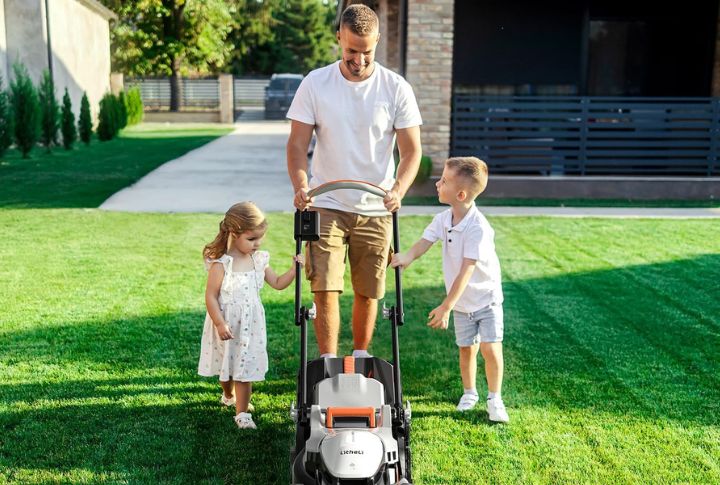
A green lawn is the result of consistent care, proper technique, and most importantly, smart timing. Many homeowners treat mowing as a task to check off the list as early as possible in the day. While that may align well with personal schedules, it often goes directly against what your lawn actually needs to thrive.
That’s why understanding when not to mow can make all the difference.
Why Mowing Time Directly Impacts Lawn Health
Each mowing session slightly injures your grass by cutting the blades. This is a normal and necessary part of lawn care, but timing affects how well the grass recovers.
When you mow under the wrong conditions, recovery slows, and your lawn becomes vulnerable to a range of problems. These include soil stress, discoloration, and long-term thinning.
To understand the importance of timing, we need to start by identifying the most commonly misjudged window: the early morning.
Early Morning Mowing Is The Most Harmful
Although early morning might feel like the perfect time to mow, especially on a quiet day off, this is actually when your lawn is at its most fragile. During these hours, the grass is still damp with dew, overnight moisture, or early watering.
Wet blades bend more than they stand, which prevents your mower from cutting evenly. Instead of slicing through cleanly, the mower tears the grass, leaving ragged edges that are prone to browning.
Wet Conditions Create The Pathway For Disease
Other than uneven cutting, the biggest risk of mowing in the morning is that it creates an open door for fungal infections. The combination of wet grass and torn leaf edges provides an ideal environment for diseases to take root and spread.
Fungal spores love moisture. They settle easily into the fresh cuts and begin multiplying before the lawn even has a chance to heal. Even worse, your mower can carry these fungal spores from one part of the yard to another.
So, what begins as a small patch of discoloration can quickly spread across your entire lawn just because of poor timing.
Moisture In The Soil Increases The Risk Of Compaction
The trouble doesn’t end with what happens above ground. Wet grass often means wet soil, and that presents another danger: compaction. When the soil is still soft from overnight moisture or rain, the weight of your mower presses down and compresses it. This reduces air pockets that roots need to access oxygen and water.
Over time, compacted soil makes it harder for your lawn to absorb the necessary nutrients it requires.
Mowing Wet Grass Also Damages Equipment
While your lawn suffers, your mower is not immune either. Usually, wet grass dulls blades more quickly and causes them to drag through the turf instead of gliding across. Eventually, your mower starts to wear out faster when used in damp conditions.
In short, a dull mower blade directly affects how your lawn looks and feels after every session.
Late Morning To Early Afternoon Offers The Best Conditions
Once the dew has evaporated and the sun is higher in the sky, your lawn begins to dry out and stand tall. This makes late morning to early afternoon the optimal time to mow. During this window, the grass is dry, the soil is firm, and your mower can cut cleanly through the blades.
Your turf is also still photosynthetically active, which helps it recover faster from the trimming. As a result, the grass heals quickly and maintains its vibrant, uniform appearance.
Even Midday Heat Can Stress The Lawn
Although midday mowing avoids the moisture of early morning, it introduces a different problem. The intense heat and direct sunlight at noon can dehydrate your lawn, especially just after trimming.
Mowing under high temperatures increases water loss from the leaf surface and causes the lawn to look faded or dull within hours.
To strike the right balance, aim to mow once the grass is dry but before the heat peaks. In most areas, this means starting between 10 a.m. and 12:30 p.m.
Consistency Is Helpful, But Conditions Always Come First
It’s natural to want to mow on a schedule; perhaps every Saturday morning. However, rigid schedules should never override the actual conditions of your lawn. If it’s damp, postpone. If it’s extremely hot, wait until a cooler time.
Remember, your lawn doesn’t follow a calendar, and adjusting your mowing habits to match its needs will pay off with better color and stronger roots throughout the year.

